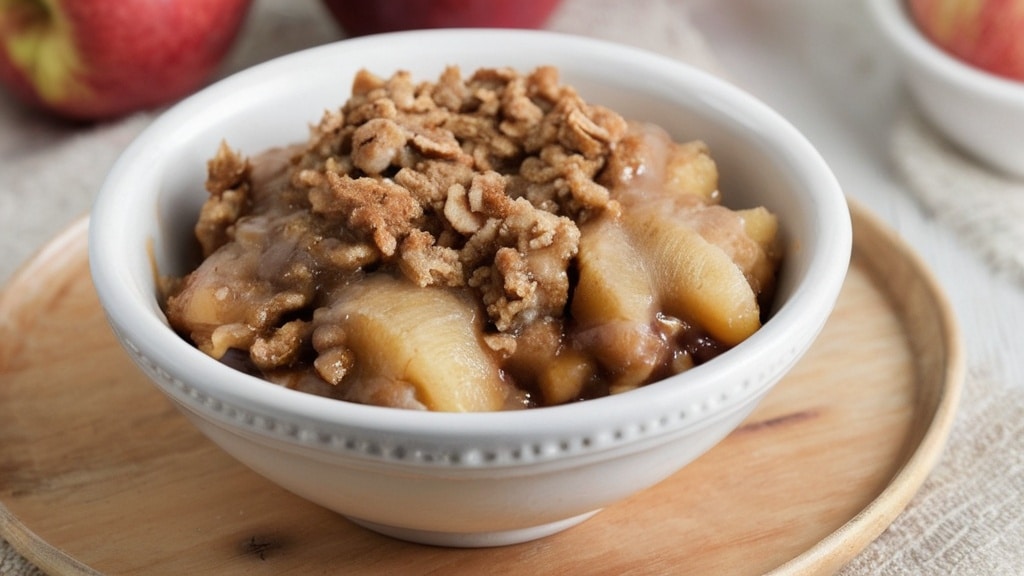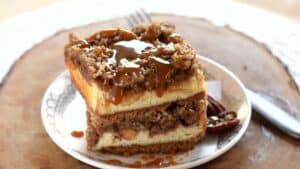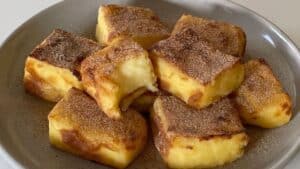Slow Cooker Crockpot Apple Crisp
You think you’ve had apple crisp? Not until you’ve slow-cooked it. I mean the real kind. The kind that smells like a grandmother’s kitchen met a five-star pastry chef in Vermont. And here’s the twist this isn’t baked in an oven. We’re letting the humble Crockpot do all the heavy lifting.
This isn’t a recipe, not really. It’s a rethinking. A technical breakdown of why slow cooking apple crisp isn’t just a shortcut it’s a damn upgrade. If you’re a professional in foodservice or culinary development, you’ll want to know why this method deserves a permanent space in your fall rotation.
And no, it’s not just for lazy Tuesday nights. This is serious flavor chemistry.
Why Professionals Should Take Slow-Cooked Desserts Seriously
So let’s be blunt—slow cookers have a rep. Homey. Lazy. “Set it and forget it.” But that’s a narrow lens. Slow cookers offer low, consistent heat distribution that most conventional ovens simply can’t match when it comes to sugar breakdown and texture balance.
In the context of apple crisp? That’s transformative.
With steady moist heat over time, apples break down gently, their pectins relaxing without collapsing into mush. Meanwhile, your topping crisps in an entirely new way—chewier, more caramelized, and almost cookie-like. That contrast is gold on a plate.
If you’re in R&D or running a kitchen where prep time is tight but flavor can’t be compromised, this method is a stealth asset. You prep, load, walk away. No babysitting. No scorching. Just results.
The Science of Texture: Why the Crockpot Works
Alright, a quick peek under the hood.
When you bake an apple crisp in a high-heat oven (let’s say 375°F), you’re forcing moisture out fast. That’s great for crunch, but it’s harsh on fruit integrity. You lose a lot of nuanced flavor—especially in heritage or heirloom apples like Ashmead’s Kernel or Gravenstein.
In a Crockpot, you’re cooking at around 190–200°F. That’s slow enough for sugars to brown without burning and gentle enough that the apple retains dimension.
And if you thought browning only happens with dry heat? Think again.
Maillard Reactions in the Slow Lane
There’s a subtle Maillard reaction happening here—not blazing fast, but low and slow. Oats, flour, brown sugar—they still brown, just differently. The topping becomes more like a cookie crust. Some chefs hate that. Others swear by it. It’s polarizing in the best way.
You even get micro-steaming around the edges of the Crockpot. That means a soft, almost pudding-like ring that cradles the crisp. It’s weird. And amazing.
Apple Varieties: Let’s Not Pretend They’re All the Same
Here’s where pros separate from hobbyists. You can’t just throw any apple in and expect magic. Choose the wrong one, and your filling will taste like baby food.
Best Apples for Crockpot Apple Crisp:
- Honeycrisp: Holds texture, solid sugar-acid balance.
- Granny Smith: Tart, firm, a classic anchor.
- Pink Lady: Beautiful complexity when slow-cooked.
- Braeburn: Highly aromatic, almost floral under low heat.
Avoid Red Delicious. Seriously, just don’t. They collapse into flavorless mush. They’re bred for shelf-life, not depth.
Use a mix. Always a mix. That’s how you build layers—some melt, some stay. Like composing a string quartet in a Crockpot.
Crunch Control: The Art of the Topping
This is where Crockpot crisp wins big if you cheat the system just a bit.
The biggest complaint? The topping can get soggy. Of course it can—you’re steaming a dessert in a sealed pot. But here’s the chef’s workaround:
Pro Tip: Double Crisp Method
Layer half the crisp topping directly on the apples. That’ll soften and absorb fruit juices—pure flavor sponge.
Then, about 30 minutes before serving, toss a dry, pre-baked batch of topping on top. That’s right, bake it separately in the oven. Or even better—toast it in a pan with butter until golden and crumbly.
This gives you structure. Bite. Drama.
Also: consider using toasted pecans or crushed amaretti cookies in your topping mix. Adds nuttiness and complexity that oven methods often mute.
Time, Temp & Texture: Dialing It All In

There’s no perfect time setting—it depends on your model, altitude, apple choice, and batch size. But here’s the ballpark:
- Low setting: 3.5 to 4.5 hours
- High setting: 2 to 2.5 hours
Resist the urge to stir. Every time you lift that lid, you’re releasing moisture and dropping the temp. That ruins structure and slows caramelization. Set a timer and walk away.
A lotta folks think slow cooking = less control. That’s backwards. It’s just a different kind of control. Quiet, confident control.
Flavor Additions That Actually Matter
You know what doesn’t matter? A pinch of cinnamon and nutmeg. Everyone does that. It’s safe. Boring.
Let’s talk real enhancement.
- Cardamom: One of the few spices that survives long heat with its soul intact.
- Calvados: French apple brandy. Two tablespoons changes the game.
- Vanilla bean paste: Skip extract. You want the seeds. You want the specks.
- Brown butter: Stir this into your oat topping and watch the reaction.
Want to go more chef-forward? Use rosemary—yes, rosemary. Finely chopped, just a whisper of it. It adds earthiness that tames the sugar rush.
Or swap in salted miso to the topping for an umami kick that lingers.
You can be bold here. The Crockpot is forgiving. It gives you margin for error, which means room to experiment.
Crockpot Apple Crisp in Restaurant Applications
Yes, you can serve this in a professional setting. I’ve done it. Successfully. Multiple times.
Here’s how it plays out:
- Prep ahead of service. Hold it warm for up to an hour. Guests will never know it wasn’t finished à la minute.
- Use a brûléed sugar top at plating to fake the oven crunch.
- Top with buttermilk ice cream or cultured cream for tang.
At a high-end brunch service, you plate it in cast iron mini-skillets and no one will question your method. They’ll just taste warm fruit, oaty crunch, and spice, and smile.
It’s comfort dressed up as couture.
Addressing the Skeptics: Common Myths Busted
- “You can’t get crisp in a slow cooker.”
You can. It just takes smart layering and finishing. - “It’s too wet.”
Only if you use high-water apples or overfill. Always measure your fruit by weight. Not volume. - “It’s not professional enough.”
If your guest’s last bite is followed by silence, you’ve won. Doesn’t matter how it got cooked.
Trends to Watch: Slow-Cooked Desserts on the Rise
Here’s a stat that might surprise you: according to Technomic’s 2024 Dessert Trend Report, slow-cooked fruit-based desserts saw a 22% increase in menu penetration in casual-fine dining over the past year.
Consumers want familiar—but evolved. Something nostalgic, but different enough to feel fresh. Crockpot desserts hit that note beautifully.
They’re also cost-effective, which for operators under margin pressure, is no small thing.
And with plant-forward dining growing, a slow-cooked apple crisp—with oat topping and zero dairy—can go fully vegan with minimal tradeoffs.
It’s adaptable. Scalable. Sensible.
The Takeaway: Why This Dish Deserves Your Respect
Crockpot Apple Crisp isn’t just an easy dish. It’s a blueprint for better flavor through restraint and patience.
You’re leaning on chemistry, not flash. On balance, not brute force.
You’re making something that smells like October and tastes like Sunday mornings.
So if you’re a professional who’s quick to scoff at slow cookers—maybe don’t. There’s magic in there. Real, slow-burning magic.
And your guests? They’ll never ask what you used. They’ll just want more.









